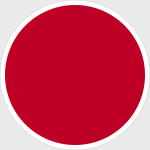Dragon DRR60428 Imperial Japanese Army Type 95 "Ha-Go" Light Tank - Company 2, 7th Tank Regiment, Philippines, 1942 (1:72 Scale)
"Bataan has fallen. The Philippine-American troops on this war-ravaged and bloodstained peninsula have laid down their arms. With heads bloody but unbowed, they have yielded to the superior force and numbers of the enemy."
- "Voice of Freedom" radio broadcast from inside Malinta Tunnel, Corregidor, April 9th, 1942
 The Japanese tankettes were in reality auxiliary vehicles, designed and adapted for a variety of support tasks. The true battle tanks were grouped into two different categories, light and medium. The most numerous light tank in December 1941, and in fact throughout most of the war, was the Type 95 or "Ha-Go." In fact, this was probably the most numerous type of tank in the Japanese forces at the time of Pearl Harbor. The Ha-Go weighed seven and a half tons, and accommodated a crew of three.
The Japanese tankettes were in reality auxiliary vehicles, designed and adapted for a variety of support tasks. The true battle tanks were grouped into two different categories, light and medium. The most numerous light tank in December 1941, and in fact throughout most of the war, was the Type 95 or "Ha-Go." In fact, this was probably the most numerous type of tank in the Japanese forces at the time of Pearl Harbor. The Ha-Go weighed seven and a half tons, and accommodated a crew of three.
The Type 95 was not well-protected, with armor to a maximum thickness of only 12mm, and not particularly well-shaped (and, of course, a round which penetrated the Ha-Go's crowded fighting compartment was almost certain to hit part of a crewman's body and/or something which would explode or catch fire). The Ha-Go's best feature was its mobility, capable of a respectable 28mph on a good road. Furthermore, there was one design area in which the Japanese most definitely got things right, and that was in the provision of diesel engines for their battle tanks, including the Type 95.
Dragon is coming up with some scintillating subjects for its Dragon Armor series of 1/72 scale vehicles. The new item is a Type 95 Ha-Go light tank, a vehicle widely used in WWII. Weighing just 7.4 tonnes, it was designed primarily as an infantry support weapon. Indeed, it was the most common light tank used by the Imperial Japanese Army (IJA) in the Pacific, with about 2,300 units manufactured by Mitsubishi Heavy Industries. It had a crew of three, and the main armament was a Type 94 37mm gun. Its maximum speed was 45km/h.
Dragon's fully built-up model is small in 1/72 scale, but its brimming with eye-catching detail. From the running gear - with its intricate road wheels, idlers, sprockets and return rollers - to the turret and gun, this Type 95 is extremely accurate. Even the track links are accurately replicated in miniature. The model is finished in the colorful camouflage scheme and markings of a tank that participated in the invasion of the Philippines in 1942. This is an extremely exciting subject from Dragon Armor - the little Japanese tank is a simply stunning creation!
Sold Out!
Dimensions:
Length: 4-inches
Width: 1-inch
Release Date: June 2011
 Historical Account: "The Greater East Asia War" - The Philippines Campaign (1941 - 1942) or the Battle of the Philippines was the invasion of the Philippines by Japan in 1941 - 1942 and the defense of the islands by Filipino and United States forces.
Historical Account: "The Greater East Asia War" - The Philippines Campaign (1941 - 1942) or the Battle of the Philippines was the invasion of the Philippines by Japan in 1941 - 1942 and the defense of the islands by Filipino and United States forces.
The defending forces outnumbered the Japanese invaders by 3 to 2, but were poorly trained and equipped, while the Japanese used their best first-line troops at the outset of the campaign. The Japanese 14th Army also concentrated its forces in the first month of the campaign, enabling it to swiftly overrun most of Luzon.
The Japanese high command, believing they had won the campaign, made a strategic decision to advance by a month their timetable of operations in Borneo and Indonesia, withdrawing their best division and the bulk of their airpower in early January 1942. This, coupled with the decision of the defenders to withdraw into a defensive holding position in the Bataan Peninsula, enabled the Americans and Filipinos to successfully hold out for four more months.





 Japanese Type 95 "Ha-Go" Light Tank - Company 2, 7
Japanese Type 95 "Ha-Go" Light Tank - Company 2, 7 



 Excellent subject matter.
Excellent subject matter.  Jap Ha-Go Tank
Jap Ha-Go Tank